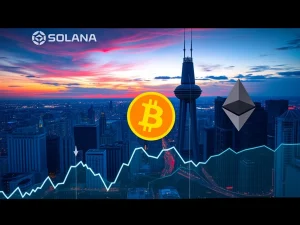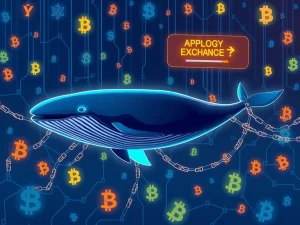Solana Price Plunges: Memecoin Fade and SOL Unlock Fears Weigh Heavy

Are you watching the Solana price? It’s been a bumpy ride lately. Despite strong underlying network activity, Solana’s native token, SOL, has faced downward pressure. What’s behind the recent dip, and what does it mean for holders and traders?
Understanding the Recent SOL Price Movement
The SOL price saw a significant drop after failing to break the $185 level on May 23. Dipping to around $167, its lowest point in over a week, has many in the crypto community asking questions. Will SOL find support, or could it test the $142 level again?
While the price action might seem concerning, it’s important to look at the bigger picture. Solana remains a major player in the crypto space, holding the position of the second-largest network by Total Value Locked (TVL). However, Ethereum’s dominance persists, backed by its extensive layer-2 ecosystem.
Let’s look at some key data points:
- Solana’s TVL increased 14% over the past month, reaching $11 billion.
- Ethereum’s TVL also saw strong growth during the same period.
- Notable Solana DApps like Raydium and Marinade showed significant TVL increases (48% and 28% respectively).
Solana News: Volume and Fees Tell a Story
Despite price volatility, underlying network metrics on Solana remain robust. Over the last 30 days, Solana’s decentralized exchanges (DEXs) recorded $94.8 billion in trading volume. This figure surpasses Ethereum’s $64.8 billion in onchain activity during the same period.
Here’s a quick comparison of recent DEX volumes:
| Network | 30-Day DEX Volume |
|---|---|
| Solana | $94.8 billion |
| Ethereum | $64.8 billion |
| Ethereum L2s | $59.2 billion |
Interestingly, Solana also outperformed Ethereum in generated fees over the past month, bringing in $48.7 million compared to Ethereum’s $36.9 million. This difference highlights Solana’s efficiency in capturing value from its onchain activity, even with a smaller deposit base than Ethereum.
Why the SOL Unlock Schedule Matters
A significant factor potentially limiting SOL’s upside is the upcoming token unlock schedule. Between June and August, approximately 3.55 million SOL tokens are set to be released. At current prices, this represents about $600 million worth of SOL entering the market.
Many of these tokens originated from the bankrupt FTX/Alameda estate and were acquired at a much lower price, around $64. This creates a potential selling pressure as recipients may look to realize profits, capping the token’s rally potential.
While Solana offers an attractive staking yield (around 8% for validators), higher than Ether’s, its supply inflation rate of 5.2% annually means the net staking return is less compelling compared to some stablecoin deposit yields available on DApps.
Other Headwinds: MEV and Fading Memecoins
Beyond unlocks, other issues weigh on investor sentiment and contribute to recent Solana news.
One technical challenge is Maximum Extractable Value (MEV). Solana’s high throughput can incentivize validators to reorder transactions for profit, potentially leading to issues like sandwich attacks that negatively impact regular users. Some researchers view MEV as a significant problem for the network.
Furthermore, the recent decline in prices of several Solana-based memecoins is impacting sentiment. After a period of significant hype and activity, many memecoins have seen sharp weekly drops. Examples include TRUMP (-24%), FARTCOIN (-20%), POPCAT (-20%), and PENGU (-17%) over the past seven days. A sustained downturn in memecoin activity could reduce DEX volumes and user engagement, putting further pressure on SOL’s performance.
Conclusion: Navigating the Crypto News Landscape
While Solana shows fundamental strength in trading volume and total deposits, the combination of anticipated SOL unlock events, technical challenges like MEV, and the fading memecoin frenzy creates significant headwinds. These factors reduce the likelihood of SOL quickly reclaiming the $200 mark in the near term. Investors should consider these dynamics when evaluating Solana’s potential.
This article provides general information and is not financial advice.









